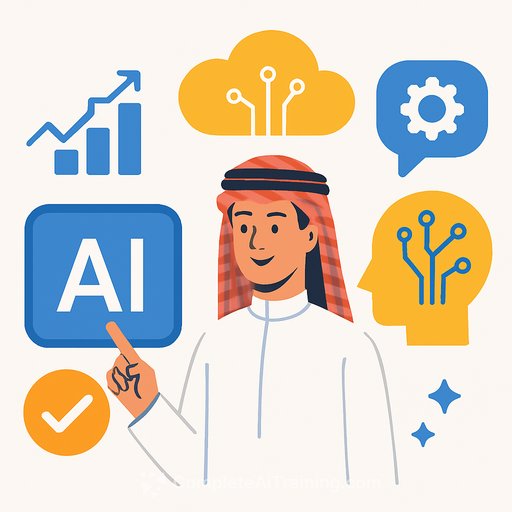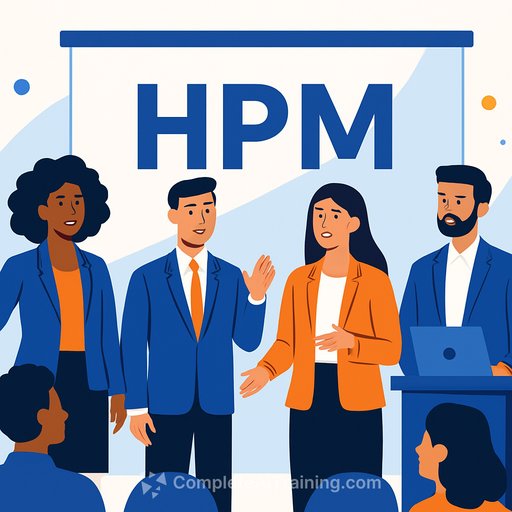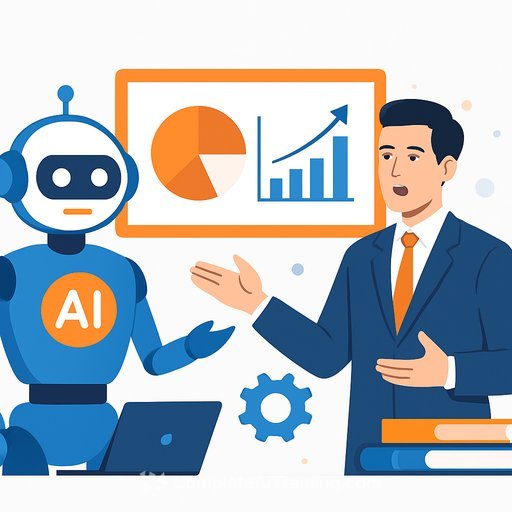SDAIA trains one million Saudis in AI. Here's what HR needs to do next
Saudi Arabia just hit a clear milestone: more than one million citizens have been trained in AI fundamentals through SDAIA's SAMAI initiative. That's nine percent of the working-age population. For HR leaders, this changes the baseline of skills in the labor market-and the expectations your workforce will bring to the table.
This push supports national goals tied to innovation and human capital development. For context, see SDAIA and Vision 2030.
What the program delivered
The SAMAI initiative provided training in AI fundamentals, ethics, and practical applications for work and study. SDAIA also launched advanced tracks and camps-most notably, programs on AI Agentic technologies-to accelerate hands-on adoption and improve efficiency.
The initiative reached more than one million participants across the Kingdom. Women represented 52 percent of trainees and men 48 percent. Employees made up 70 percent, while students accounted for 30 percent.
Who's behind it
Dr. Majed Al-Shehri of SDAIA highlighted the result during a ceremony hosted at the Ministry of Education. The effort was driven through partnership with the Ministry of Education and the Ministry of Human Resources and Social Development, enabling broad access for school and university students, teachers, and staff.
Leaders present included Minister of Education Yousef Al-Bunyan; SDAIA President Dr. Abdullah Al-Ghamdi; Deputy Minister of Education Dr. Inas Al-Issa; President of Imam Muhammad ibn Saud Islamic University Dr. Ahmed Al-Amri; and Director of the National Information Center at SDAIA Dr. Esam Al-Wagait.
Why this matters to HR
- The talent pool now has a baseline of AI literacy. Expect candidates to speak fluently about AI use cases and tools.
- Diversity tailwind: 52 percent of learners were women-good momentum for gender representation in technical upskilling.
- Role design will shift. Many non-technical roles will include AI workflows, prompting updates to job architecture and competencies.
- Internal mobility gets easier. With more employees AI-aware, you can move faster on cross-functional projects and automation initiatives.
Practical next steps for HR leaders
- Run a skills audit: map current roles to AI-related competencies (prompting, data literacy, workflow automation, AI ethics).
- Rewrite job descriptions to include AI tasks, tool proficiency, and measurable outcomes rather than vague "familiarity."
- Build an AI learning path: fundamentals for all, role-based tool training for functions, and advanced tracks for specialists.
- Update hiring screens: add practical AI work samples, scenario prompts, and portfolio reviews.
- Create internal credentials and recognize external micro-credentials for progression and pay bands.
- Publish an AI usage policy covering ethics, data privacy, tool approval, and manager responsibilities.
- Stand up an AI champions network to coach teams and track adoption in each department.
- Measure ROI: time saved per process, quality gains, error rates, and employee satisfaction with AI tools.
Program details HR can use
- Scale: 1,000,000+ trained (9 percent of working-age population).
- Diversity: 52 percent women, 48 percent men.
- Participation: 70 percent employees, 30 percent students.
- Scope: AI fundamentals, ethics, practical tools; advanced programs on AI Agentic technologies.
Risk and governance checklist
- Data handling: clear rules for PII, model inputs, and storage; vendor DPA coverage.
- Bias and fairness: testing protocols, escalation paths, and periodic audits for AI-assisted decisions.
- Change management: manager training on workflow redesign and performance expectations with AI.
- Security: approved tool list, access controls, and red-teaming for high-impact use cases.
12-month HR roadmap (simple and practical)
- Quarter 1: skills audit, JD refresh, AI policy, tool whitelist.
- Quarter 2: role-based training, hiring assessment updates, champions network.
- Quarter 3: advanced tracks (agents, automation), internal credentials, ROI dashboards.
- Quarter 4: scale successful pilots, tie outcomes to performance and promotion criteria.
Want ready-to-use curricula and credentials?
If you need structured tracks by job family or certification paths for AI skills, explore these resources:
Bottom line
SDAIA's SAMAI initiative has raised the floor on AI capability across the Saudi workforce. HR's edge now comes from execution: clear competencies, focused training, smart hiring, and strong governance. Move early, measure outcomes, and build momentum department by department.
Your membership also unlocks:






